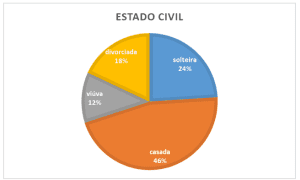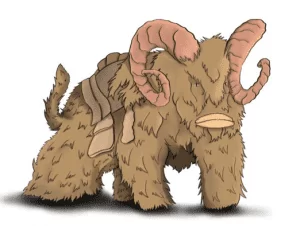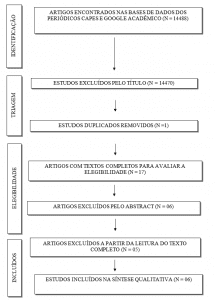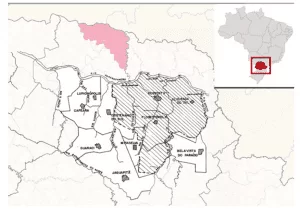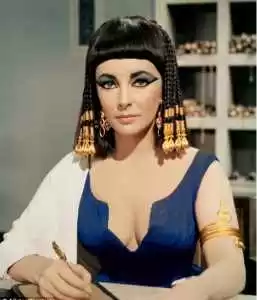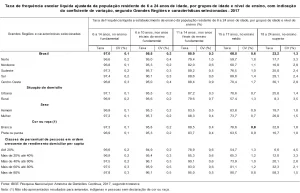ORIGINAL ARTICLE
FARAH, Leonardo de Castro [1]
FARAH, Leonardo de Castro. The Mythical Relationships Between: Adam and the Myths of Ancient Mesopotamia. Revista Científica Multidisciplinar Núcleo do Conhecimento. Year 04, Ed. 10, Vol. 07, pp. 147-160. October 2019. ISSN: 2448-0959, Access Link: https://www.nucleodoconhecimento.com.br/history/mythical-relationships
ABSTRACT
In 1981, Dr. Niels-Erik Andreasen wrote an article, called Adam and Adapa: two anthropological characters. In his work, Dr. Andreasen established relationships and parallels between the adamic myth and the Babylonian myth of Adapa. Our focus is to reinforce Andreasen’s thesis on the existence of these mythical parallels, found: in the 1st to the 3rd chapter of the book of Genesis with the various myths that we find in ancient Mesopotamia, which besides being the cradle of civilization had a strong influence on biblical authors. The myths we will address in our research are: the Myth of Gilgamesh, the Myth of Adapa and the Enuma Elish. These three myths had an influence on the Creation of the world and the man seen in the Bible. This means that the peoples of Mesopotamia have been in contact with the Hebrews for thousands of years, before as after the “captivity of Babylon” (587-527 a. C), resulting in the birth of rabbinic monotheistic Judaism.
Keywords: Adam, Adam, Hebrews, and Genesis.
INTRODUCTION
The text written by Dr. Niels-Erik Andreasen in 1981 drew parallels between: Adapa and Adam, although many theologians do not accept such relationships for religious reasons. However, the similarities between these two characters are undeniable. In this case, we will consider that both Adam and Adapa are treated as mythological characters, because to date, no archaeological or historical evidence has been found from a neutral source, which demonstrate that they have existed. We will also study the similarities, in the place that Adam lived (Garden of Eden), the role of the serpent in this place and his helper (Eve) withthe myths of Mesopotamia.
We know that Genesis had a strong external influence from the Babylonians with regard to the Creation of the World and the human being. There are thus parallels with other mythological records. With regard to research, the secondary sources will be analyzed and thus we will try to demonstrate the occurrence of influences: mythological, in the Hebrew words, which appear in Genesis, from chapters: 01 to 03 that are undoubtedly older sources, than biblical accounts.
1.1 THE ADAPA MYTH REPORT
The texts he reports on Adapa were discovered by archaeologists in the late 19th century in Tell-el-Amarna, the capital of the Egyptian Empire in the Akhenaten Era (1352-1335 bc). C). There were discovered cuneiform inscriptions of the so-called “Letters of Amarna” that keep the mythological account of Adapa.
According to McCall (1994) this myth was written on clay tablets containing: 120 dated lines, between: 15th and 14th century a. C, however there are older references of this myth in Nineveh at the beginning of the second millennium a. C. According to the translation by McCall (1994), Adapa was a wise priest of Ea (Enki – Sumerio) in the city of Eridu. The myth claims that every day, Adapa appeared to religious rites. He baked bread and placed votive tables presented as offerings to the gods. He was a temple fisherman, get out on his boat with the aim of catching fish and offering them, in the temple dedicated to Ea (McCALL, 1994).
One day, when Adapa was fishing, the South Wind passed and knocked him off the boat, throwing him into the waters of the river. Then, overcome with anger, Adapa decided to “break the wings of the SouthWind” andfor seven days, the South Wind did not blow in the fields. Anu, the god of heaven wanted to know why itwas not windy and was informed by his advisors that Adapa had broken the wings of the “”South wind”“.
Anu demanded that Adapa come to him to explain what happened. In this part of the text, Andreasen (1981) clarifies that Ea, the god of Eridu, appeared to Adapa to give him two advices. 1º When appearing in the presence of Anu (An in Sumerio) one must wear a mourning suit to try to obtain sympathy from the guardians of the gate of heaven: Tammuz[2] and Gizzida who guard the entrance of the house of Anu. And 2nd would be offered the bread and water of death, of which he should not eat or drink (McCALL, 1994). When Adapa visited Anu and explained what happened, having the support of the two guardians who speak for him, Anu’s servants: “They brought him the bread of life (eternal), but he did not eat. They brought him the water of life (eternal), but he did notdrink” (McCALL, 1994, p. 66).
In mito, Adapa rejected the foods and drinks reserved for the gods, who gave eternal life. Your rejection has to do with obedience to the god Ea. That is why Adapa is remembered for being one of the seven sages or Apkallu, which means: “wise“ (ANDREASEN, 1981).
1.2 GENESIS BOOK ANALYSIS
According to theologians, Storniolo and Balancin (1991) in the book of Genesis there are narratives of Creation that : “belong to different times and reflect different situations andproblems” (STORNIOLO and BALANCIN, 1991, p 12). For Storniolo and Balancin (1991) Genesis is a mythical and figurative account of an era.
According to Storniolo and Balancin (1991), the book of Genesis observed in: 1.1 and 2.4 would have appeared before: 587-527 a. C or “Captivity of Babylon“. With the end of the Judeo-Babylonian war, the city and the Temple of Jerusalem were destroyed, the Hebrews were enslaved and taken to live in Babylon. This stirred the psique of those people (PSALMS 137) and many Hebrews began to worship the Babylonian gods (Marduk, Enki and others). In an attempt to keep their culture and religion alive, some Hebrews began to write their sacred books: the Torah and the Talmud.
The Torah and talmud were influenced by Persian and Babylonian cultures. The observation of the Sabbath as a sacred day is a heritage of the Sumerios, who lived in the 3rd millennium to. C[3]. According to Caramelo (2006), from the University of Lisbon, the Mesopotamians, when organizing urban life and time, had to create civil and religious calendars, with the aim of maintaining a social order.
The calendar, as a way of organizing time and human existence, had to be explained. In fact, the Mesopotamians believed that all the primordial achievements, which had allowed man to found the world as they knew it, had been created by the gods and granted to mankind (CARAMELO, 2006, p. 01).
The Mesopotamians realized that there are four lunar phases. And, each lunar phase would last for seven days and on the last day of the week the transition of the lunar phases occurs. So, the last day of the week, Saturday, which for the Mesopotamians was not such a sacred day. The cultural and religious contact between the Hebrews and the Mesopotamians enabled influences inherited from the custom of sanctifying the Sabbath.
Storniolo and Balancin (1991) claim that divine Creation would have lasted seven days. Enuma Elish also suggests that the Creation of the gods would have lasted a week. In the genesis account, the culmination of creation is Man and Woman (Gen 01:27), created on the sixth day. On the seventh day, “God” rested (direct reference to the Sabbath being sacred and adopted by the Hebrews).
The creation schema in a six-day sequence denotes a concern about the order. This is achieved through distinctions and distinctions, ordering the chaotic reality of the Earth, which was “formless and empty” (STORNIOLO AND BALANCIN, 1991, p 14).
Only in the 2nd and 3rd chapters of Genesis do they appear: Adam, Eve, the Garden, and the Serpent. Many theologians believe that these passages are figurative or illustrative. For Storniolo and Balancin (1991) we should not take the book of Genesis as literal, this book is not scientific, it is just a legendary account of the origins of the world and man. “Let us remember, however, that this narrative is also not interested in the scientific problem of origins, but aims to respond to certain concerns of the time in which she was born” (STORNIOLO and BALANCIN, 1991, p 15).
1.3 THE DATING OF MYTHS: ADAPA AND ADAPA
According to Scheindlin (2003) the earliest recorded Hebrew inscription is dated around 950 BC. C, which is the Gezer Calendar. At the moment, there is nothing more ancient in Hebrew than this Calendar. According to Armstrong (2012), the book of Genesis, like the Pentateuch, would have been written by different people in different historical periods, being dated between: 800-600 a. Ç.
As for the Enuma Elish and the Myth of Gilgamesh, there is a certainty that they were written at the beginning of the 2nd millennium BC. C (KRAMER, 1969), obviously being older than the Genesis account. Enuma Elish consists of seven clay tablets, which narrate the Creation of the World. McCall (1994) suggests that the Adapa myth was found, at Tell-El-Amarna in Egypt, being dated: 1400-1300 BC. Ç.
Many theologians, such as Pontes (2010), believe that the 1st Chapter of Genesis has parallels with the Mesopotamian holy book, the Enuma Elish, which is the basis of their dissertation. Comparing these two books, we notice that they have common elements, such as: 1st the occurrence of chaos (darkness or darkness covered the abyss), 2nd the water existing before creation and 3rd the wind (the breath or movement of “God” under the waters) (PONTES, 2010). These similarities described above are very common in the Hebrew and Mesopotamian world.
ENUMA ELISH:  GENESIS 1:02:
GENESIS 1:02:

1.4 ADAM, EVE, THE GARDEN OF EDEN AND THE SERPENT
1.4.1 ADAM
According to the Bible, El (“God“) created Adam from the clay or the “earth dusth“. In Ancient Mesopotamia and Ancient Egypt, clay was a creative force. With the clay it was made: tablets, ceramics, homemade utensils, bricks for the construction of houses and monuments, ritualistic ceramics for offerings to the gods. According to Bottéro (2011), the Mesopotamians believed that after death the corpse became dust due to the decomposition process. When “God” knew that Adam had ate from the forbidden fruit he reproached him saying, “[…]For thou sane thou sand shallreturn” (Gen 3:19). In The Myth of Gilgamesh,we noticed that Gilgamesh was mourned because of the death of his friend Enkidu:“I want to scream, so that everyone hears! The friend who was so dear to me became dust; Enkidu, my friend, became like clay” (MELLA, s/d, p 61). Both in Genesis and in the Myth of Gilgamesh the human being is created from clay and becomes dust after his death.
GILGAMESH EPOPEIA:  GENESIS 2: 07
GENESIS 2: 07  We may note that, in the myth of Adam and the Epic of Gilgamesh, there is some similarity. Both Adam and Enkidu are the “image and likeness” of the gods. This suggests that before the fall these two characters would have acquired divine qualities that were lost in the course of their mythological stories.
We may note that, in the myth of Adam and the Epic of Gilgamesh, there is some similarity. Both Adam and Enkidu are the “image and likeness” of the gods. This suggests that before the fall these two characters would have acquired divine qualities that were lost in the course of their mythological stories.
In the myth, Adam had two sons: Cain and Abel[4]. This is an allegory that serves to represent the urban world (Cain) in contrast to the rural world (Abel). According to the research carried out by the masters: Pedro Sahium, Vera Regiane Brescovici Nunes and Washington Maciel da Silva (2016) Cain and Abel and their murder would be in the field of symbolism rather than being treated as a historical fact.
Regarding the similarities between: Adapa and Adam, Andreasen (1981) suggests that if we substitute: the “p” for the “m” – we have “Adama” (which means: “Soil or Earth” the origin of Adam). If we take the letter “a” from “Adama”, it is: Adam, which in Hebrew means: “Man” (Adam, in Portuguese) (ANDREASEN, 1981, p 181).
Andreasen (1981) in his text created word games presented in a rich and wide way, making refutation difficult due to the comparisons of the treated objects, such as: obeying God: Ea or El; not eating certain food; lose eternal life if you eat a certain food; wear proper clothes: mourning in Adapa’s case while Adam and Eve wore skin clothes, made by El (Gen. 3: 21):
Both Adam and Adapa were apparently tested with food (and drink, in the case of Adapa); and, according to some interpreters, both failed the test, hence the parallel between the two accounts[5] (ANDREASEN, 1981, p 182).
From what we know of the Myth of Adapa, when he appeared in front of Anu was offered: “the bread and water of life” he obeyed the recommendations of his god Ea, and did not eat or drank anything, and with it lost eternal life. In Adam’s case the same thing happened. His helper (Eve) was tempted by the Serpent, who offered him the food (fruit), Adam and Eve ate from food and disobeyed El’s[6] recommendations and thus both lost eternal life (ANDREASEN, 1981). In the Myth of Adapa the food was offered by the god Anu, while, in the Myth of Adam, the food was initially offered by the Serpent. Both cases resulted in the immediate loss of immortality. Anyway, Andreasen concluded:
Both were subject to a test involving food and both received two sets of advice; namely, “do not eat” (God and Ea) and “eat” (Serpent and Anu). One, Adapa, obeyed and passed his test; the other, Adam, disobeyed and failed. But even this situation is complicated by a further consideration; namely, the relationship between obedience/disobedience and immortality[7] (ANDREASEN, 1981, p 185).
1.4.2 EVA
Eve appears in Genesis 02: 22. In adamic myth, medieval clerics taxed Eve as the woman responsible for Adam (Adão) having lost his immortality and innocence (MACEDO, 1999). This is precisely what the Myth of Gilgamesh exemplifies. Initially, the gods create Enkidu, from clay, as a brave warrior, who spoke, ate and lived together with animals in the forests. He destroyed hunters’ traps.
He was innocent of man and knew nothing of the cultivation of the land. Enkidu ate grass on the hills with gazelles and prowled the waterholes with the animals of the forest; along with the herds of hunting animals, he rejoiced in the water (ANÔNIMO, 2001, p 62).
The hunters went to Uruk and complained to Gilgamesh that Enkidu was hindering the hunt. And Gilgamesh, put a woman from the Temple of Ishtar “naked” called: Shamhat to seduce him and have sex with him. And for six days and six nights they had sex. When they were done, Enkidu tried to go back to his old routine among the forest animals. But, the animals started running away from him. Moral of the story, Enkidu blamed the woman for having lost her innocence (MELLA, undated).
[…] after satisfied, however, he returned to the wild animals. But now, when he saw it, the gazelles were on the trigger; the wild creatures fled as they approached. Enkidu wanted to follow them, but his body seemed to be trapped by a rope, his knees faltered as he tried to run, he had lost his speed and agility. And all the creatures of the jungle fled; Enkidu had lost his strength, for he now had knowledge within him, and man’s thoughts occupied his heart. Then he came back and sat at the woman’s foot, and listened carefully to what she said to him: “You are wise, Enkidu, and now you have become like a god. Why do you want to run wild in the hills with the beasts of the bush? Come with me. Come and take you to uruk from the mighty walls, to the blessed temple of Ishtar and Anu, of love andheaven; there lives Gilgamesh, who isstrong, and as a wild bull dominates and rules men (ANÔNIMO, 2001, p 63-64).
In the text, Enkidu when having sexual contact with Shamhat lost his characteristics, and the girl told him: “that he was now similar to the gods” is the same description, which we find in Genesis 3:22, when the couple: Adam and Eve eat from forbidden fruit.
This means that thanks to the woman, Enkidu by losing his identity, in the same way that happened to Adam (Adão). In Greek myth, the first human woman created by the gods was Pandora. She was beautiful, like Aphrodite, intelligent and curious. Legend has it that Pandora, and her “intense curiosity“, moved a box that Epimetheus kept and when opening it released the ills, diseases and evil that spread around the world (BULFINCH, 2001). In short, in antiquity, women were considered second-class citizens, without equal rights to men and, moreover, were religiously accused of bringing evil to society.
In the society of ancient Mesopotamia and the Region of Canaan, women had certain prohibitions, such as: not going out on the street unaccompanied, being confined in a section reserved for women in the Temple. If the woman is menstruating, it was forbidden by law to go to the Temple to make her sacrifice (Leviticus 15: 19-24). There was a certain obligation to wear the veil (until today it is followed). There were social conventions that imposed more duties than rights for women.
1.4.3 THE GARDEN OF EDEN
It is said, in Genesis 02: 10; El (“God“) created a Garden and put man to “save it“. The location of this Garden is described in the Bible, there was a river that was born in Eden and that irrigated the Garden, and was divided into four parts: Tigris, Euphrates, Pisom and Giom. well… The Tigris and Euphrates rivers are located in Ancient Mesopotamia (today, Iraq). The rivers: Pisom and Giom have not yet been discovered, if they existed probably, would have their watercourses altered, because from time to time the trajectory of rivers changes rapidly.
In the 3rd century. C the Greek Jews, elaborated the Greek Bible, called: Septuagint. Genesis is a Greek word meaning: Beginning. The word: “Garden” in Hebrew is: Gan. That same Greek word means: pa-rá-dei-sos or “Paradise“. The name: “Eden” is not of Hebrew origin but sumerian origin, its etymology comes from the word “Edin” or “Edinu“, which means: “field or plain“. The word: Edinu resembles Eridu, the city in which Adapa lived. This city was located on an alluvial plain.
Knowing the origins of the words: Garden of Eden, we can conclude its meaning which is: “Paradise of the Plain“. For the Romans, the place where the dead went was a kind of paradise, called “Champs-Elysées” – the “Field” can beassociated, also a plain. Enkidu friend of Gilgamesh was called the “plain panther“. And finally, Clifford (1994) and some researchers like Enkidu and the woman he hadrelationship with (Shamhat) as being the inspiration for the creation of: Adam (‘adam) and Eve (ḥavah).
According to Kriwaczek (2018) he stated that Edin is a Sumerio name that derives from: Gu-Edin, whichmeans: “edge of the steppe” (KRIWACZEK, 2018). Kriwaczek (2018) states that the Eden of the Bible would be a reference to Gu-Edin[8] (a paradise site). The cities of Lagash and Umma, which were reportedly 30 km away from each other, have been at war for 100 years. Other sources speak of 150 years of conflict[9]. The reason for this dispute was control of: Gu-Edin. Described as a region very rich in natural resources: “there were pastures for herds and herds, as well as abundant hunting to cultivate: wild boars, deer, gazelles, orymies, ostrich, wild donkeys, wild oxen” (KRIWACZEK, 2018, p 116). The control of this territory was extremely important for the two cities, with the objective of expanding their domains, increasing cattle raising and cereal production. The soil of that region was extremely fertile. When the king of Lagash defeated Umma, the creation was commissioned to show the entire military campaign. It was then created: Stele of the Vultures, dating from the beginning of the III Sumerian Dynasty, around: 2,600-2,350 BC.
In most mythologies there is a tree associated with eternal life or death. In “Paradise“, El (“God“) created all kinds of trees of good fruits to eat. Having there: the Tree of Life. “God” placed this tree in his Garden, which man would keep (Genesis 02:15). The woman only appears in: Genesis 02: 23-25. In short, the Garden belonged to El (“God“) and not to man. In the myth of Gilgamesh, the Tree of Life is associated with the garden of the gods and is guarded bya woman (Siduri-Sabitu):
Before Gilgamesh were now stretched the splendid “Gardens of the gods“, the fruits were like ruby, hung magnificent bunches of grape, another tree was covered with lapis lazuli […] Gilgamesh was oriented […] to “Seek Siduri-Sabitu, the wise lady of Heavenly Mountain, she is sitting on a throne in the garden of the gods, next to the Ocean and custody the Tree of Life (MELLA, s/d, p 62).
Recent myths, such as the Norse (Vikings) have in their mythology a tree associated with life. According to them, this tree connects: the world of Men to the world of the dead and to the world of the Gods, called Yggdrasil. This tree was considered by the Nordics to be a “sacred tree“. According to Davidson (2004) this tree would be destroyed in Ragnarok (End of the Viking World). For the Nordics, this tree is located in the center of the Universe (not the center of the garden) (DAVIDSON, 2004).
The Yggdrasil was undoubtedly a guardian tree, and when the end of the world approached it trembled and swayed. Her destiny, like that of all the sacred trees felled in Germania and by Christian missionaries, was inseparably linked to the gods she cared for and protected (DAVIDSON, 2004, p. 162).
1.4.4 THE SNAKE
According to Enuma Elish, the god Marduk after killing Tiamat (serpent goddess) created the world: “your weapons will never lose theirpower, he will crush the enemy“. (Enuma Elish 4th board 16th row). The Mythology of the Canaanites (rival peoples of the Hebrews) stated that: Baal (son of El) killed the seven-headed dragon, called “Lotan“. Later, Baal using Lotan’s body created the world (ARMSTRONG, 2008). Because of rivalries: political, economic, cultural and religious between the Hebrews and the Canaanites, the god, Baal was demonized in the Bible.
In Greek mythology, Apollo, son of Zeus (supreme god of the Greek pantheon), kills the Python serpent (BULFINCH, 2001). After Python’s death, Apollo creates the world. In Viking mythology, in Ragnarok (End of the World Day), Thor, son of Odin (king of the Norse gods), kills the world’s serpent, Jormungand (in the fight they both end up dying). In Aztec mythology, Quetzalcoatl kills a sea monster (Cipactli) and then creates the world. In view of these examples above, the Bible describes a fight between: El (“God“) with a sea serpent, the Leviathan:
On that day the LORD will punish with his hard sword, great and strong, the Leviathan, the swift serpent, and the Leviathan,the dertuous serpent, and kill the dragon, which is in the sea (Isaiah 27:01).
In the myths: Canaanites , Hebrews, Vikings, Greeks and Mesopotamians, we see that there is a struggle (conflict) between a male warriorgod (El-sabaoth – Lord of the armies, Marduk, Baal, Apollo and Thor), against a seaserpent (Leviathan, Lotan, Cipactli, Jormungand and Tiamat).
In the Myth of Gilgamesh and the Myth of Adam, theserpent deceives both. According to Gilgamesh, he learned of the existence ofa “plant” or a “fruit” that gaveimmortality and “eternal youth“. But this “plant” that looked like a plum, was on the bottom of the sea (MELLA, s/d). Then Gilgamesh tied two stones to his legs and went to the bottom of the sea and managed to catch such a “plant” or “fruit“. But coming close to his kingdom, the unexpected occurred:
However, after thirty leagues, while bathing in a small cold pond in the late afternoon, a snake sniffs the sweet-smelling plant and steals it. Then Gilgamesh sits and cries. He finally realizes that immortality is not for him: he must give up (McCALL, 1994, p. 49).
In short, the serpent was responsible for Adam and Eve falling into temptation in Paradise (and may both lose their immortality or eternal youth). And Gilgamesh failed to achieve his goal: immortality. We see here parallels between the myths. And that the serpent would be associated with chaos and disorder.
On the other hand, comparing the different cultures of antiquity, we realize that snakes have a dual function. It brings blessings and curses. In Ancient Egypt, the royal emblem of the pharaohs was the crown bearing on the forehead a Naja(serpent),at the same time there was a serpent (Apóphys, associated with chaos) that fought every day with Ra, the supreme god of Ancient Egypt (BAINES, MÁLEK, 1996). In some cultures, the snake could be associated with magic and medicine. In Mesopotamia Ea (Enki Babylon) was associated with wisdom and medicine, and its symbol was of a staff with a serpent intertwined in it (which exists to this day).
One of the guardians of the Heaven’s Gate of Anu’s house is Gizzida. According to Cunningham, Black, Robson and Zolyomi (2006) Gizzida (or Ningishzida) was like a god with the ability to walk and talk havinga snake body and human head. According to Jakobsen, Gizzida was the owner of a “good tree“[10].
In the Bible, the serpent would appear long after the creation of Man and Woman in Gen 03:02. Being described as the “most cautious creature” that El (“God“) had created. It is important to comment here that the Serpent of Genesis has no connection to Satan/Lucifer. There is no evidence: textual, archaeological and historical to associate “demons” withthe serpent. The conception of a single evil figure, such as Satan, did not exist before the “Babylonian Captivity” (587-537 a. C).
Currently Satan would be associated with a serpent due to the Book of Revelation which was written between the years: 90-110 d. C. That is, many years after Genesis was written. During the years 700-600 a. C, the priests and other Hebrew population believed that El (“God”) could do both good and evil.
CONCLUSION
The purpose of this research was to compare mythological characters with biblical characters and with this, we were able to succeed, because the book of Genesis from chapter 01 to 03 would be surrounded by mythological elements common among the various societies of the Ancient World. Adam, the Serpent and the Garden of Eden were products imported froma religious and cultural superpower, which we call: Mesopotamia. There is no denying that their heritage served as a springboard for years later, the Hebrews would compile their ideas in what we call Genesis.
Markets, ambassadors, and nomadic peoples as they moved from Mesopotamia to Ancient Egypt, they were forced to pass through the Syrian-Palestinian corridor, (where israel is now, so the local people (Hebrews and Canaaneus) obtained cultural-religious contacts with various peoples of the Middle East. This contact was fundamental to the development of the myths we see in Genesis. We can even assume that the Hebrews “borrowed” some myths, characters and poems to create a plot that told the origin of their people, thus creating their own story. This was made clear when we noticed parallels between: Adapa and Adam, between the struggle of warrior gods and sea serpents, the existence of the Garden of the gods in the world of Mesopotamia and the peoples of the Syrian-Palestinian corridor, and finally the serpent, an animal that for some cultures, can bring blessings and to other curses. The people of antiquity had the desire and the will, to have a divine promise (through a warrior god), which would eliminate: chaos, on earth.
REFERENCES
ANÔNIMO. A Epopeia de Gilgamesh. São Paulo: Martins Fontes, 2011. (Tradução de Carlos Daudt de Oliveira).
ANÔNIMO. Enuma Elish. (Tradução L. W. King), 1902.
ARMSTRONG, Karen. Uma História de Deus. São Paulo: Cia das Letras, 2012.
BAINES, John e MÁLEK, Jaromír. O Mundo Egípcio: Deuses, Templos e Faraós. Volume II. In: Religião, Lisboa: Del Prato, 1996, p 209-220.
BLACK, Jeremy; CUNNINGHAM, Graham; ROBSON, Eleanor e ZOLYOMI, Gabor. The Literature of Ancient Sumer. Oxford: Oxford University Press, 2006.
BOTTÉRO, Jean. No Começo Eram os Deuses. Rio de Janeiro: Civilização Brasileira, 2011.
BUDGE, E. A. Wallis. A Versão Babilônica sobre o Dilúvio e a Epopeia de Gilgamesh. São Paulo: Madras, 2004.
BULFINCH, Thomas. O Livro de Ouro da Mitologia: Histórias de Deuses e Heróis. In: Capítulo III: Apolo e Dafne – Píramo e Tisbe – Céfalo e Prócris. Rio de Janeiro: Ediouro, 2001.
CLIFFORD, Richard J. Creation Accounts in the Ancient Near East and in the Bible. Washington-DC. Catholic Biblical Association, 1994.
DAVIDSON, H. R. Ellis. Deuses e Mitos do Norte da Europa. In: O Começo e o Fim. São Paulo: Madras, 2004. P 161-171.
KRAMER, Samuel N. Mesopotâmia: O Berço da Civilização. Rio de Janeiro: José Olímpio Time-Life, 1969.
KRIWACZEK, Paul. Babilônia: A Mesopotâmia e o Nascimento da Civilização. Rio de Janeiro: Zahar, 2018.
LEICK, Gwendolyn. Mesopotâmia: A Invenção da cidade. Rio de Janeiro: Imago, 2003.
MACEDO, José Rivair de. As Mulheres Medievais. 4ª Ed. São Paulo: Contexto, 1999.
MELLA, Frederico Arbório. Dos Sumérios a Babel. São Paulo: Hemus, s/d.
McCALL, Henrietta. O Passado Lendário: Mitos da Mesopotâmia. São Paulo: Moraes, 1994.
RATHBONE, Dominic. História Ilustrada do Mundo Antigo. In: Mesopotâmia. São Paulo: Data Folha, 2001. P 84-129.
SCHEINDLIN, Raymond. História Ilustrada do Povo Hebreu. 2ª Reimpressão. Rio de Janeiro: Ediouro, 2003. P 50-51.
STORNIOLO, Ivo e BALANCIN, Euclides. Como Ler o Gênesis: Origem da Vida e da História. 14ª Reimpressão. São Paulo: Paulus, 2013.
MASTERS DISSERTATION
PONTES, Antônio Ivemar da Silva. A “Influência” do Mito Babilônico da Criação, Enuma Elish, em Gênesis 1,1-2,4a. 2010. Dissertação (Mestrado em Ciência da Religião) Programa de Pós-Graduação da UNICAP (Universidade Católica de Pernambuco), Recife, 2010.
ARTICLES
ANDREASEN, Niels-Erik. Adam and Adapa: two anthropological characters. Andrews University Seminary Studies, Vol. 19, No. 3, Autumn 1981, P 179-194.
SAHIUM, Pedro; NUNES, Vera Regiane Brescovici e SILVA, Washington Maciel Da. A Violência Simbólica Em Caim E Abel: Uma Releitura Contemporânea. Goiânia: Fragmentos de Cultura. Volume: 26, n° 4. outubro/dezembro de 2016. p 586-595.
CARAMELO, Francisco. Os Calendários Mesopotâmicos, o Culto e as Hemerologias. Revista de História e Teoria das Ideias. Volume, 2006. P 01-11.
VIDEOGRAPHY
History Channel. Mysteries of The Garden of Eden (Mistério do Jardim do Éden PT-BR). Produção Executiva: Ary Tarpinian e Paninee Theeranuntaway. Produção: Dylan Tilley. Editor: Andy Palmer: Direção: Jeff Schird. Produzido por: Morningstar Entertainment for the History Channel. Color, Dolby, Widescreen, NTSC. Linguagem: inglês. Dublado. USA. 2007. 44min: 51seg.
TV Escola. B comme Babylone (B de Babilônia PT-BR). Diretor: Bernard George. Empresa (s) produtora (s): Arté France, Museu do Louvre, YLE. Synapse Brasil. Color, Dolby, Widescreen, NTSC. Linguagem: francês. Dublado. França. 2008. 54 minutos: 57 segundos.
History Channel. Confronto dos Deuses América Latina: Quetzalcoatl. Diretor: Diego Alvarez. Produtor: Sebastian Vinelli. Produtor executivo: Aldo Ballesteros. Narrador: Ali Rondón. Por History Channel Latin America LLC: Executive VP and General Manager: Eduardo Ruiz. NTSC. Linguagem: português. Dublado. México. 2011. 47 minutos: 24 segundos.
INTERNET
https://en.wikipedia.org/wiki/Ningishzida (acessado em 13/04/2019).
https://en.wikipedia.org/wiki/Gu-Edin (acessado em 13/04/2019).
https://aventurasnahistoria.uol.com.br/noticias/historia-hoje/pilar-decifrado-historia-guerra-fronteira-antiga.phtml (acessado em 13/04/2019).
https://en.wikipedia.org/wiki/Abba-El_I (acessado em 13/04/2019).
APPENDIX – FOOTNOTE REFERENCES
- Tammuz according to the Mesopotamian Myth was the “shepherd” God. God of agriculture, and lover of Isthar. In the Jewish Calendar, there is the name Tammuz, corresponding to the harvest months (June/July).
- The Babylonians called the Sabbath: sappattu or sabbattu. This day is celebrated the cult of the Moon, which takes place once a month. Mesopotamian Astronomy has discovered that the week is seven days old, being interpreted as a “divine sign“. The Hebrews, in turn, took this commemorative day for themselves.
- In the Paleobabylonian period, the Yamhad dynasty: Abba-El I had made a pact with his brother, Yarim-Lim I swearing loyalty and if they broke the alliance they would be cursed. That would have inspired the myth.
- Adam and Adapa were apparently tested with food (and drink, in the case of Adapa ); and, according to some interpreters, both failed the test, hence the parallel between the two (ANDREASEN, 1981).
- In this case, the authors of Genesis call their god El-Elyon (meaning: God the most high). El is a word of Canaanéia origin that means either Lord or God. (ARMSTRONG, 2012).
- Both were subjected to a food test and both received two sets of advice, namely “do not eat ” (God and Ea) and “eat” (Serpent and Anu). One, Adapa, obeyed and passed the test; the other, Adam, disobeyed and failed. But even this situation is complicated by additional consideration; that is, the relationship between obedience/disobedience and immortality.
- https://aventurasnahistoria.uol.com.br/noticias/historia-hoje/pilar-decifrado-historia-guerra-fronteira-antiga.phtml
- https://en.wikipedia.org/wiki/Gu-Edin
- https://en.wikipedia.org/wiki/Ningishzida
[1] Professor of History at The John Kennedy State College, Graduated in History from UNI-BH (University Center of BH), Specialist in Sociology Education from the Northwest College of Minas Gerais. Specialist in History by the Luso-Brazilian College. Specialist in History and Geography by the Barão de Mauá University Center.
Submitted: June, 2019.
Approved: October, 2019.

